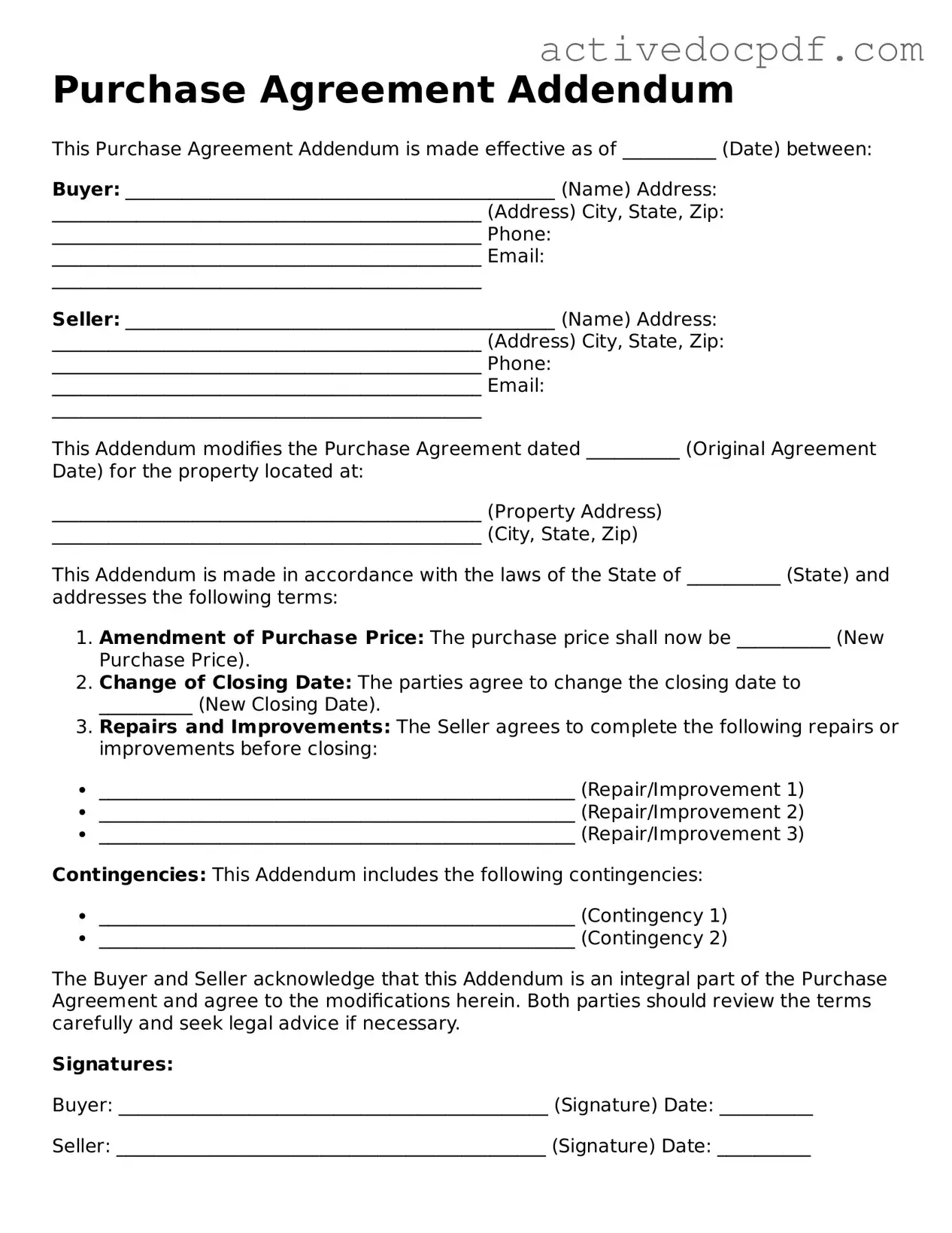What is a Purchase Agreement Addendum?
A Purchase Agreement Addendum is a document that modifies or adds to the original purchase agreement between the buyer and seller. This form is used to clarify specific terms or conditions that may not have been included in the initial agreement. It serves to ensure both parties are on the same page regarding any changes or additional stipulations.
When should I use a Purchase Agreement Addendum?
You should consider using a Purchase Agreement Addendum when there are changes to the terms of the purchase agreement. Common scenarios include:
-
Adjustments to the purchase price.
-
Changes in closing dates.
-
Inclusions or exclusions of specific items from the sale.
-
Additional contingencies that need to be addressed.
Using an addendum helps to formalize these changes and avoid misunderstandings later on.
How do I create a Purchase Agreement Addendum?
Creating a Purchase Agreement Addendum involves a few straightforward steps:
-
Identify the specific terms you wish to modify or add.
-
Clearly state these changes in the addendum document.
-
Include reference to the original purchase agreement, including its date and parties involved.
-
Have both parties review and sign the addendum to ensure mutual agreement.
Always keep a copy of the signed addendum with the original purchase agreement for your records.
Do both parties need to sign the Purchase Agreement Addendum?
Yes, both the buyer and seller must sign the Purchase Agreement Addendum for it to be valid. This ensures that both parties agree to the changes made. Without signatures, the addendum may not hold legal weight, and disputes could arise regarding the terms of the agreement.
Can I make changes to the Purchase Agreement Addendum after it is signed?
Once the Purchase Agreement Addendum is signed, making changes can be complicated. If modifications are necessary, a new addendum should be created to address these changes. It’s crucial to have all parties sign this new document to ensure clarity and agreement on the updated terms.
What happens if there is a conflict between the original Purchase Agreement and the Addendum?
In the event of a conflict between the original Purchase Agreement and the Addendum, the terms in the Addendum typically take precedence. This is because the addendum is meant to clarify or modify the original terms. However, it is essential to read both documents carefully to understand how they interact with each other.
Is a Purchase Agreement Addendum legally binding?
Yes, a Purchase Agreement Addendum is legally binding as long as it is properly executed by both parties. It must be clear, signed, and dated to be enforceable. If either party fails to adhere to the terms outlined in the addendum, the other party may have legal recourse to enforce the agreement.
